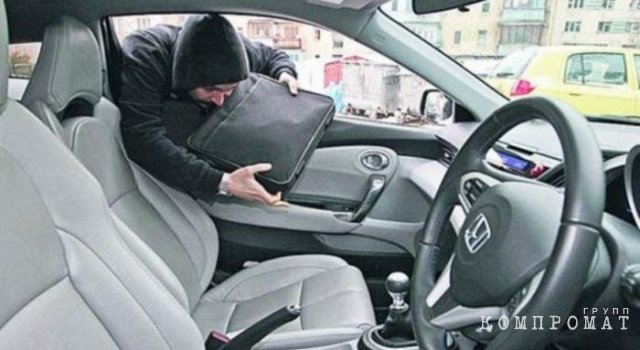A phenomenon that had been eradicated in the 2000s has returned to St. Petersburg. In the city on the Neva, a gang of barsetters was again caught. Many analysts believe that this is a living sign of the return of the 90s. Some attribute the “return” to the increased level of cash payments and the situation with banks. According to our sources, the appearance of barsetters is a direct signal of the economic crisis. How street criminals became a reflection of crises, the editors of the online publication “Kompromat Group“.
Fourth element
In the mid-2000s, they were called “fiends of the 90s” and reports of incidents were full of reports of robberies. Stock traders, businessmen and wealthy people suffered the most. Here is an excerpt from the police reports, which are then published media to make citizens more vigilant.
In those rampant times for crime, from 800 to 1200 criminals operated in St. Petersburg. On different days, the income of the robbers was from 800 thousand rubles up to several million in foreign currency for one “kidok”. The main thing is to choose a car more expensive.
The years 2008-2009 were especially rich in robberies.
Literally everyone suffered. So, in January 2009, on Khlopin Street in broad daylight, barsetters surrounded the car of a judge of the Dzerzhinsky District Court. An unknown person approached the Subaru Forester, which was parked, broke the glass from the side of the front passenger seat and stole the judge’s bag from there.
In the same 2009 in Kolomyagi, “an unknown attacker of Caucasian appearance openly stole a woman’s bag from a foreign car”. The bag belonged to the assistant to the vice-speaker of the Legislative Assembly of the Leningrad Region. In the summer of the same year, the honored coach of Russia in figure skating became a victim of the barsetters – Tatyana Tarasova. Following her, in the same June, the People’s Artist of Russia also suffered. Evgenia Simonova. Law enforcement agencies introduced the “Interception” plan, but it did not bring much fruit.
Handbags, as a type of crime, appeared about 20 years ago. At first, the attackers smashed freight forwarders on the highways who traveled to purchase goods in other regions. But transport companies began to put guards with weapons in their trucks, or send escort vehicles, again with guards. It was more profitable to pay an armed convoy than to lose large sums of cash. As people in the know say, it was this fact that made the robbers move from the main road to the bags of merchants.
In “well-fed” times, about 10-12 well-organized groups of 30-50 people hung out near the St. Petersburg Stock Exchange on Vasilyevsky Island and the St. Petersburg Futures Exchange on Ligovsky Prospekt. All of them were mostly natives of Georgia and Abkhazia.
Business for Batono
At the beginning of those years, the open file cabinet of the Organized Crime Control Department contained more than 450 photographs of the “faces” of the pursemen. Why open? The fact is that even caught purse-makers, in rare cases, fell into the millstones of the law enforcement system. After all, they ran in groups, and the purse of the victim was in the hands of only one. Therefore, it was imperative to take it red-handed with a purse in hand, like Kostya Saprykin. If the captured bandits did not have anything with them, then the detectives had to let them go. Since such races (sometimes even many hours), along the streets behind the cars of bandits, the ubopovites were specifically fed up, they went for broke and created an open database of barsetters on the Internet. There were no names and surnames, only photos of “orcs” and the place where they “work”.
As we have already mentioned, people from Georgia and Abkhazia were mainly engaged in this profitable business. Most often – the tour method. Sometimes detectives smiled happiness. So, in 2008 they managed to put 8 Georgian robbers behind bars, led by Amiran Chkadua. The court found them guilty of participating in an organized criminal community, numerous robberies and robberies. Behind them there were more than 21 attacks, with imitation of minor accidents, during which bags with money and documents were stolen from the victims from the car. According to the verdict of the court, they received from 8 to 10 years in prison. It was a big victory for the power structures. After all, the group Chkadua, was directly connected with “thief in law” by Patsoi, operated in the area of the Stock Exchange on Vasilyevsky Island, and, one might say, “feeded” the criminal authority.
It is noteworthy that he Shota Imnaishvili (thief in law, nicknamed Patsa), in 2014 he became a victim of … an ordinary raid. Someone decided that it was time to rob the loot, and on September 1, 2014, false employees of the Investigative Committee visited his office located at 25 Bolshaya Konyushennaya Street and carried him out 10 million rubles. Common money.
Information from Kompromat Group:
Shota Imnaishvili is a native of Georgia. He first came to the attention of law enforcement agencies at the age of 13, and at 16 he had already received a sentence for theft. He served more than 10 years in Georgia, where he was “crowned”. In the mid-90s he moved to Russia, in the 2000s he lived in St. Petersburg.
“Puncture-resurrected”
The law enforcement agencies have long noted one curious detail. Groups of barsetters begin to scurry around the city, during economically difficult times. Their appearance was in the default 90s, then they disappeared to reappear in the first crisis – 2008-2009. With the introduction of bank cards, the business of purse-makers built on cash was greatly shaken, but did not cease to exist. The next burst of violent activity of barsetters was very active and fell on the 2014-2016 sanctions years. In those years, the bandits bombed not only large businesses that they managed to catch, but in general everyone who moved in a more or less decent vehicle.
Methods of robbery changed and improved all the time. The most famous way is “puncture”. A group of bandits in cars graze the victim, and take it on the track in pincers – front and back. The main thing is to force the owner of the car to get out of the car. To do this, they pierce the wheel, pretend to be unlucky tourists (the “card” method or “how to get to the library?”), Arrange fake accidents. Also fashionable were ways to puncture radiators and “douching” the hoods of expensive cars with oil (a “kind-hearted neighbor” overtakes a car poured with oil on the road and informs the owner that he is leaking oil. Then everything follows the usual scenario).
But if in 2008-2009 they still preferred to deceive the victims, then in 2014-2016 everything became tougher. After being taken “in a box”, the victim was simply beaten, for starters, the windows were terrifyingly broken with a bat.
Today in St. Petersburg, the police gloomily joke that “a puncture has risen” and are preparing to count the victims.
The law enforcement agencies believe that the active withdrawal of large sums of money by the townspeople in recent months and the financial panic became the signal for the “resurrection”. People rushed to withdraw money, fearing that they would be blocked in the accounts of banks that fell under the sanctions. This also includes those who quickly managed to stock up on convertible currency in good volumes.
The economic situation has certainly hit the official businesses of criminal groups and ethnic diasporas. Only now, instead of millions, impoverished guest performers and local bandits are ready to be content with hundreds of thousands of rubles. Three purses detained at the end of April managed to get hold of 148 thousand rubles, an expensive construction tool and a laptop. This means that the simple middle class or wealthy citizens are now at risk. Large businessmen can afford security and order a collection service.
True, now the barsetniks do not need to smash cars or pierce a wheel at all. Criminals armed themselves with computer technology. The thieves tracked the cars with binoculars, and then using a special electronic device they read the access code and then quietly opened the car in order to delve into someone else’s good without noise and dust.
However, as security officials say, no one has canceled the good old methods either, so they will continue to rob citizens in parking lots near large supermarkets on weekends. We can’t rule out hunting down victims near the depository at Vosstaniya 6, where people deposit and withdraw money when buying real estate, and a resurgence of attacks on currency speculators. The collection groups are again under the gun, but this is a completely different story and a different level of crime, more serious.
So far, law enforcement agencies are considering the capture of the group as a very disturbing syndrome.










